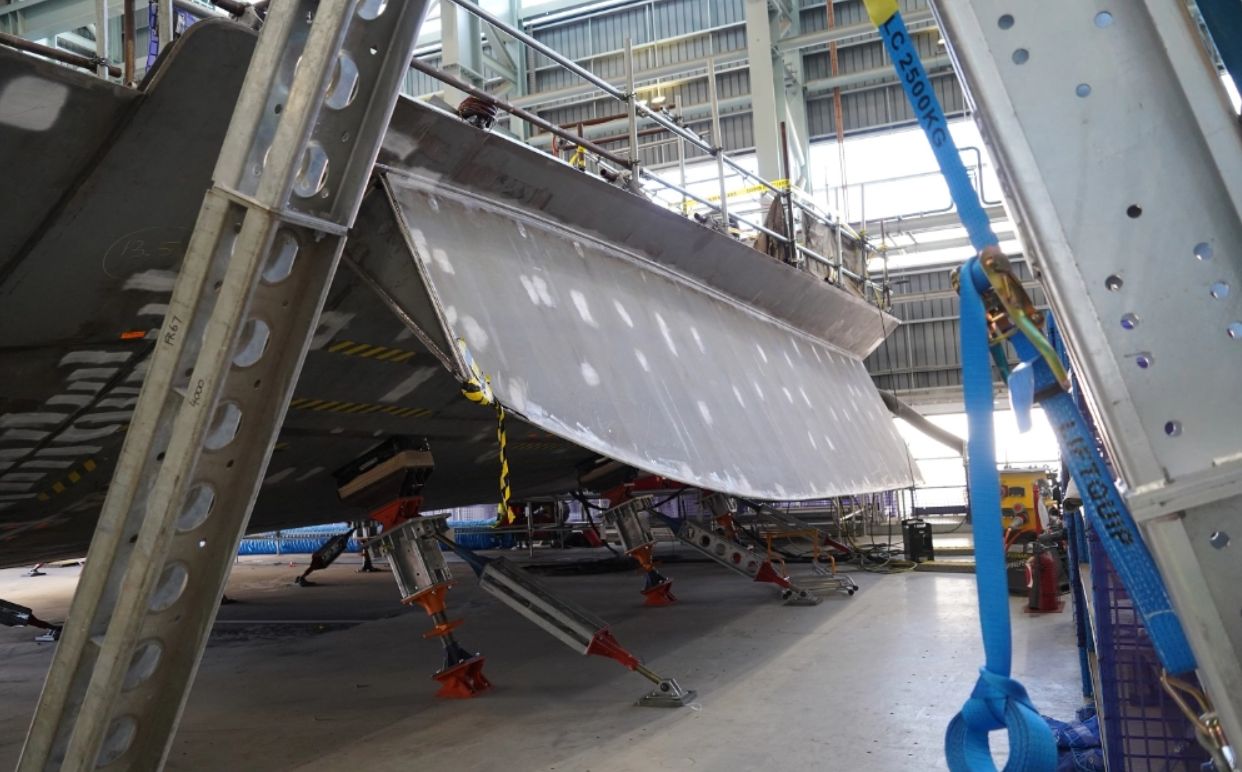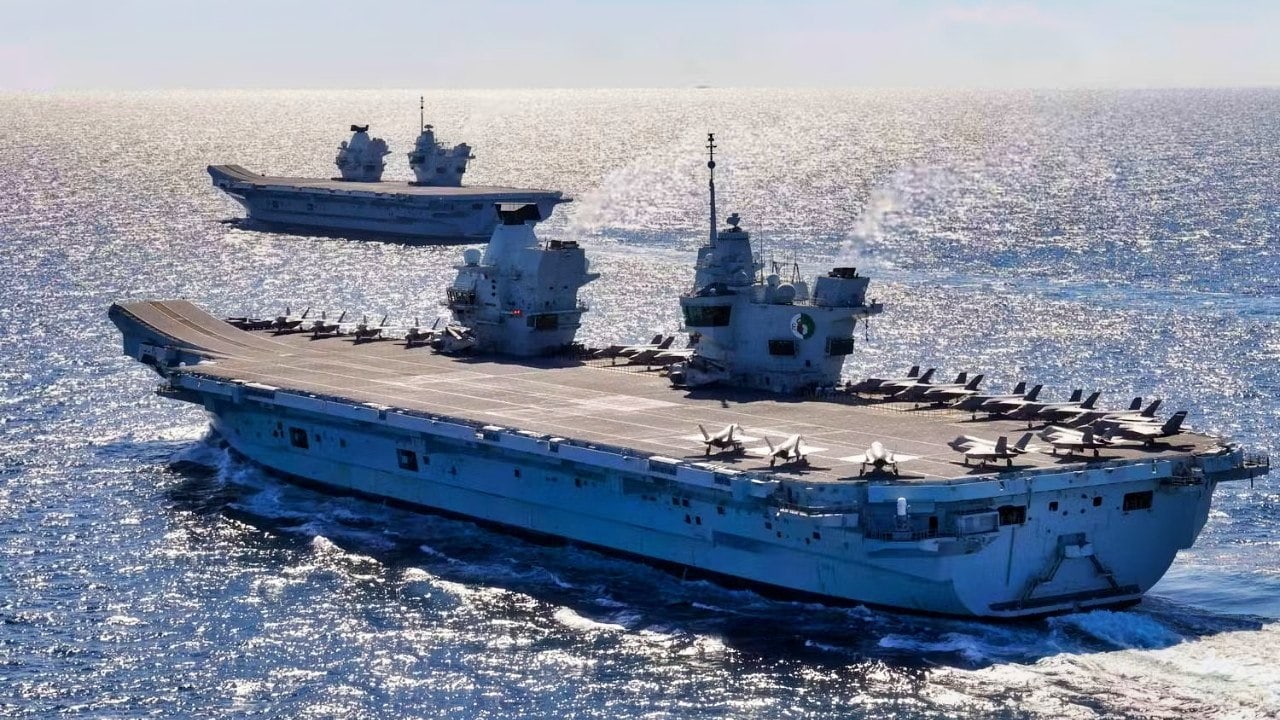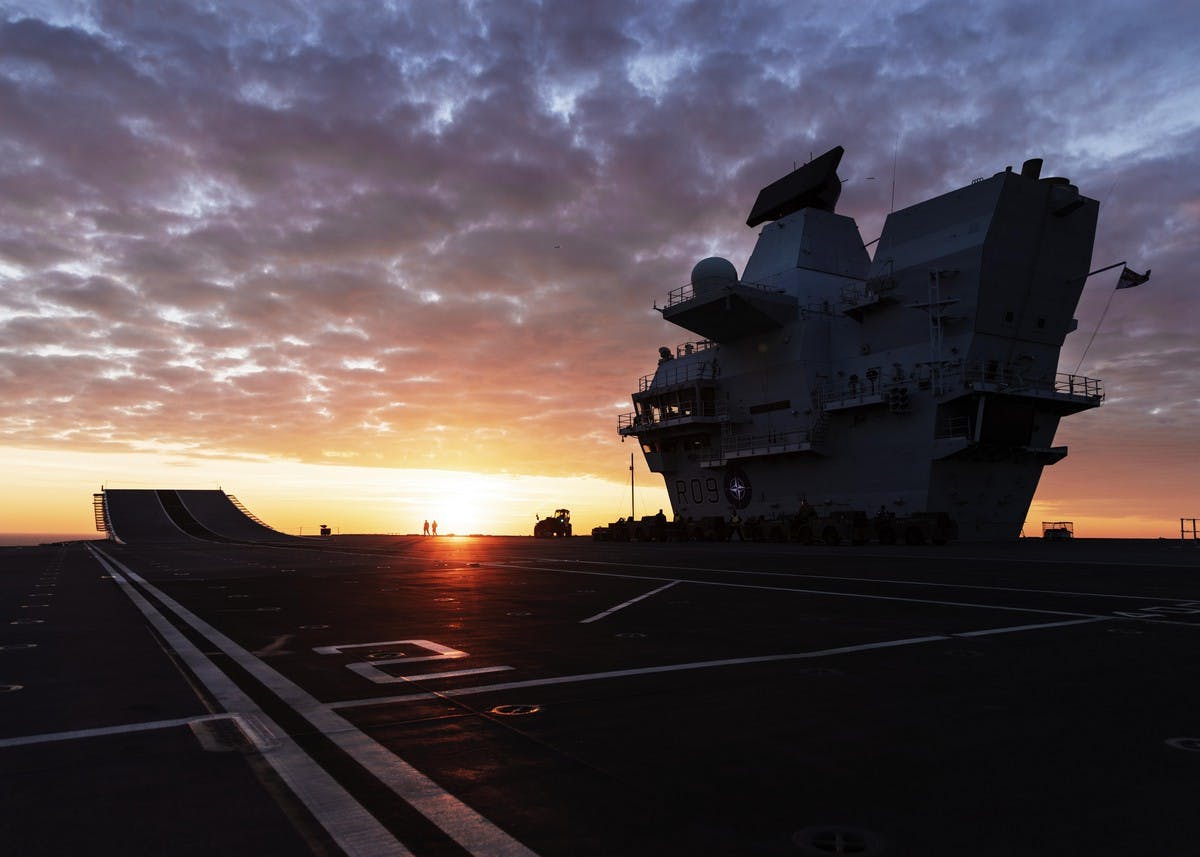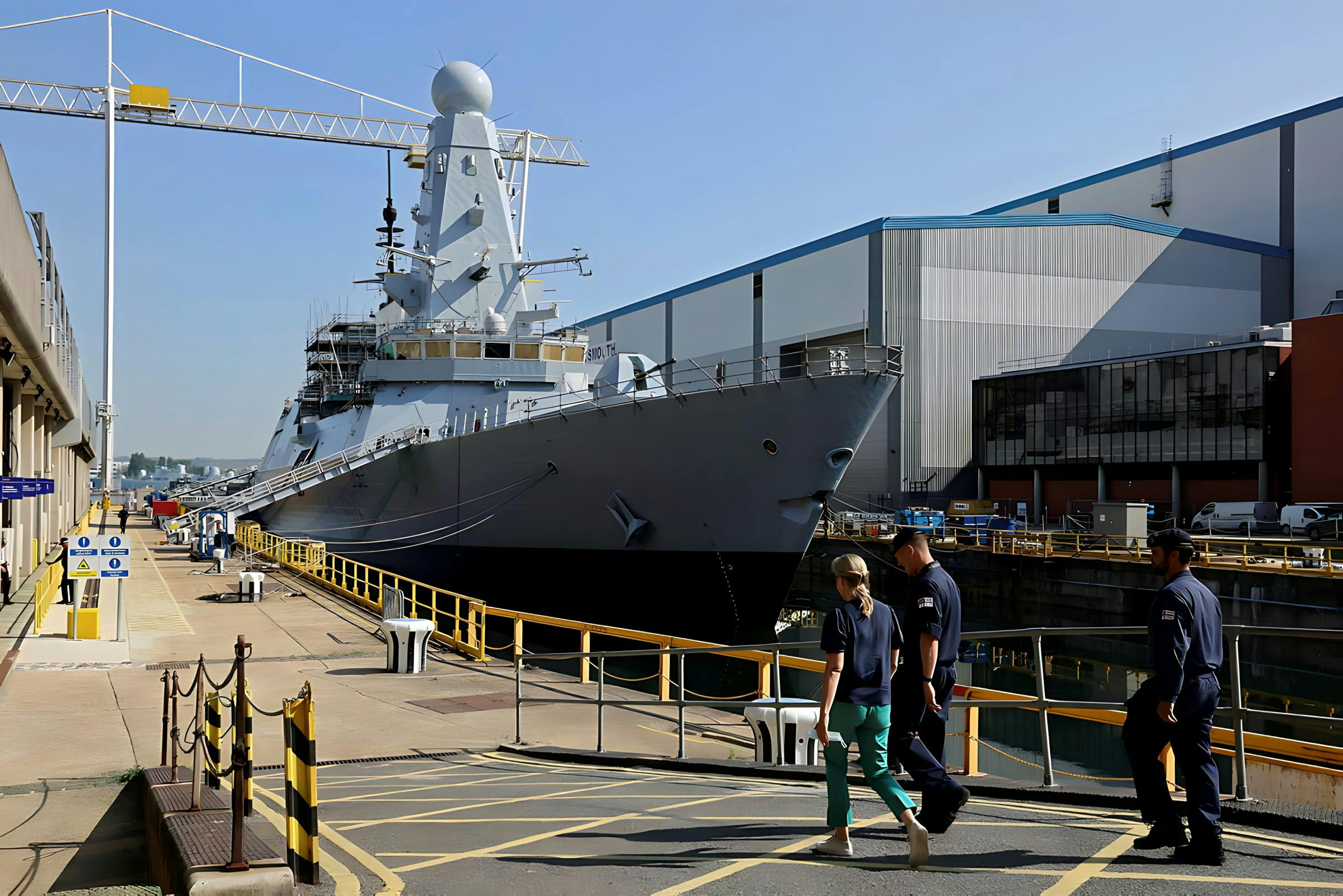Oldgateboatdriver
Army.ca Fixture
- Reaction score
- 3,408
- Points
- 1,010
What makes you think a "hot" war would pit Russia against China?

If it’s the last thing Doug Ford does, in exchange for supporting Carney he’ll have Heddle building a fleet of CVNs that can double as grain carriers.I dont think theres much to be done about the design personnel. The yards have construction work for years ahead
Seaspan 15 yrs
Irving 25 yrs
Davie 10 yrs ?
What other ships could we use? Forgetting the construction and manning of them?
Some sort of sealift?
LPD/LHD?
Sub tender?
CMMC/CDC/Kingston replacement?
More AOR? But why not build more of the same?
A war between Russia and China? Or are you referring to the Japanese ships? Because a 12,000 ton frigate/destroyer/cruiser isn't the same as the Yamato.I would assume that these two ships are going to be a magnet to every Chinese missile within 500km of there ever was a hot war.
I was referring to a war with Japan supporting the US in defending Taiwan against China.What makes you think a "hot" war would pit Russia against China?

If you look at other navaltoday articles like this one back in 2023, they copy and paste basically the same text regarding 24 Mark 41 VLS and Sea Ceptor, so I think its just poorly researched regurgitation of the base UK model.Some news on the Australian Hunter class construction progress:

Construction advances on Australia's first Hunter-class frigate
The Hunter-class Frigate Program has hit a milestone after the first two machinery units for the first ship were consolidated.www.navaltoday.com
I found it interesting that these also appear to be limited to 24 MK41 cells. It has been widely reported in "other" forums that the Hunters would have 32. Also interesting the reference to a VLS for Sea Ceptor. That is something I have not seen associated with the Hunters before.
The Type 26 frigate programme, once hailed as a beacon of British naval innovation, has stumbled over a series of obstacles. These are not isolated incidents, but indications of wider failure which reveal much about our national industrial capabilities and programme management.
When Britain embarked on the programme, the objective was clear: to build a modern vessel proficient in anti-submarine warfare (ASW) in both the North Atlantic and the Indo-Pacific, and capable of quiet operation. The Royal Navy’s ambition to meet stringent ASW standards required advanced technology, leading to the development, for example, of a highly specialised gearbox derived from submarines.
But ambition soon clashed with industrial reality. Awarded to a company in Huddersfield in 2015, the gearbox project fell foul of Britain’s diminished industrial base. The expertise needed to produce it had atrophied, requiring the manufacturers to relearn skills and increase capacity. The initial gearbox was delivered late and failed to meet standards, resulting in costly modifications to HMS Glasgow and adding £233 million to the programme.
Poor communications have also hampered procurement. The Ministry of Defence was not informed of the gearbox failure until 20 months after the problem was identified. This delay was later confirmed during a Defence Select Committee hearing in November 2022, underscoring clear issues in transparency and management.
The Type 26 programme is emblematic of a deeper issue: the dissonance between Britain’s advanced defence ambitions and the current state of our industrial base.
Innovation often outpaces the readiness of our supply chains which can derail entire projects. In this case, the decision to rely on a bespoke gearbox, without viable commercial alternatives, created a single point of failure that jeopardised the project’s timeline, cost, and credibility.



 ukdefencejournal.org.uk
ukdefencejournal.org.uk

 ukdefencejournal.org.uk
ukdefencejournal.org.uk

The Royal Navy's new multibillion pound hunter-killer submarine, HMS Astute, has been beset by design and construction flaws that have raised doubts about its performance and potential safety.
The Guardian can reveal that Astute, the first of seven new submarines costing £9.75bn, has been unable to reach its intended top speed.
At the moment, the boat, heralded as the most sophisticated submarine ever built for the navy, cannot sprint to emergencies or away from an attack – an essential requirement for a hunter-killer boat.
It would also be incapable of keeping pace with the Royal Navy's new aircraft carriers, which will be able to travel at more than 30 knots and need the submarines to protect them. One source told the Guardian the boat had a "V8 engine with a Morris Minor gearbox".
Yes we are using the same one. Given the timelines though, we are abotu 6 years behind the UK, so they will have worked out the kinks ideally by the time they get to us.
The Type 26 frigate serves as a cautionary tale about our Navy
Slashing taxes and regulations for businesses and lowering energy prices would help boost our flagging defence capabilitieswww.telegraph.co.uk
So? Are we relying on the same gearbox? The Aussies?
The Brits only need 5, excluding spares. Between us we and the Aussies need 24, plus spares.
....
Also the Brits seem to be struggling with drive line issues generally.

The Royal Navy's HMS Queen Elizabeth Aircraft Carrier: Just a Giant Design Flaw?
In February 2024 it was reported that propeller issues on the HMS Queen Elizabeth aircraft carrier would leave the vessel incapable of participating in an important NATO exercise.www.19fortyfive.com

HMS Prince of Wales – Shaft failure investigation results
Ministry of Defence letter sheds light on the cause of HMS Prince of Wales' shaft failure, discussing operational impacts and ongoing rectification efforts.ukdefencejournal.org.uk

Type 45 Destroyer has spent most of its life in maintenance
HMS Daring, the Royal Navy's first Type 45 destroyer, has now spent more time in maintenance and refits than in active service.ukdefencejournal.org.uk

Slow, leaky, rusty: Britain's £10bn submarine beset by design flaws
Exclusive: the 'most sophisticated submarine ever built' has 'a V8 engine with a Morris Minor gear box'www.theguardian.com
From the 2012 article
Since that article the RN has commissioned another four hulls in the intervening 12 years. One gearbox every three years. Was this the gearbox that the Type 26 was planning on using as a template?
6 of the 7 Astutes are complete with one still building.
Yes we are using the same one. Given the timelines though, we are abotu 6 years behind the UK, so they will have worked out the kinks ideally by the time they get to us.
This is one of the reasons this ship was selected. Because the UK is de-risking it ahead of us as we go.
TBF, they have much higher standards then we do for equipment (in some cases, we don't have any coherent standards), and generally a lot more people/expertise on the equipment side, because they invest in/support that capability. Both us and the Aussies buying the same gearing is great for all of us, in terms of shared equipment maintenance, as well as obsolescence management.Emphasis on ideally. Which really means hopefully, in this case. Hope, is always a COA.
You have a lot of faith in the UK. I hope your position is eventually proven founded.
TBF, they have much higher standards then we do for equipment (in some cases, we don't have any coherent standards), and generally a lot more people/expertise on the equipment side, because they invest in/support that capability. Both us and the Aussies buying the same gearing is great for all of us, in terms of shared equipment maintenance, as well as obsolescence management.
Also, we're taking an ASW gearbox (which doesn't have controllable reversible propellors (CRP), so you have to actually stop and reverse the gearing), and putting it on a destroyer so gearbox noise is less critical. They aren't talking about full loss of gearbox development, just some of the very specialized black magic that goes into things like ultra quiet gearing design, that only fully meshes under full power.
Some things on the platform are a step back on system integration and automation on the battle damage side, but generally it's a really well designed ship with a lot of redundancy so as long as we minimize redesigns of things due to lack of understanding from the operators in requirements, it'll be a great platform.
As someone who spent a lot of time in ASBs, my favourite thing is that there is already a full set of DC/FF equipment at the alternate location, so you don't need to do the panicked grab and go to relocate for something like emergency flying stations.

I think they made that decision a couple of years ago now. My fear is some senior bureaucrat in Ottawa will push the RCN to do the same.Australia teams with Japan for 11 frigates.
When did Australia cut their number of Hunter class ships down to 6 from 9?
True - but at least they are swapping it out with a 5/6,000 ton actual frigate not some 1,600-1,800 Corvette….I think they made that decision a couple of years ago now. My fear is some senior bureaucrat in Ottawa will push the RCN to do the same.
How does the Type 31 stack up against a Halifax?The specs on those sound similar to Type 31, but with a 127 instead of a 57.
I answered myself - AI is wonderful, lol.How does the Type 31 stack up against a Halifax?
How does the Type 31 stack up against a Halifax?
I've been matrixed in and been able to see a lot of the design as well as do things like some combat recoverability table tops where we did a virtual torture test of the DC systems and crewing concept.Words words words.
I have no doubts it has the potential to be a great ship class for Canada.
I think my post was pretty clear.

